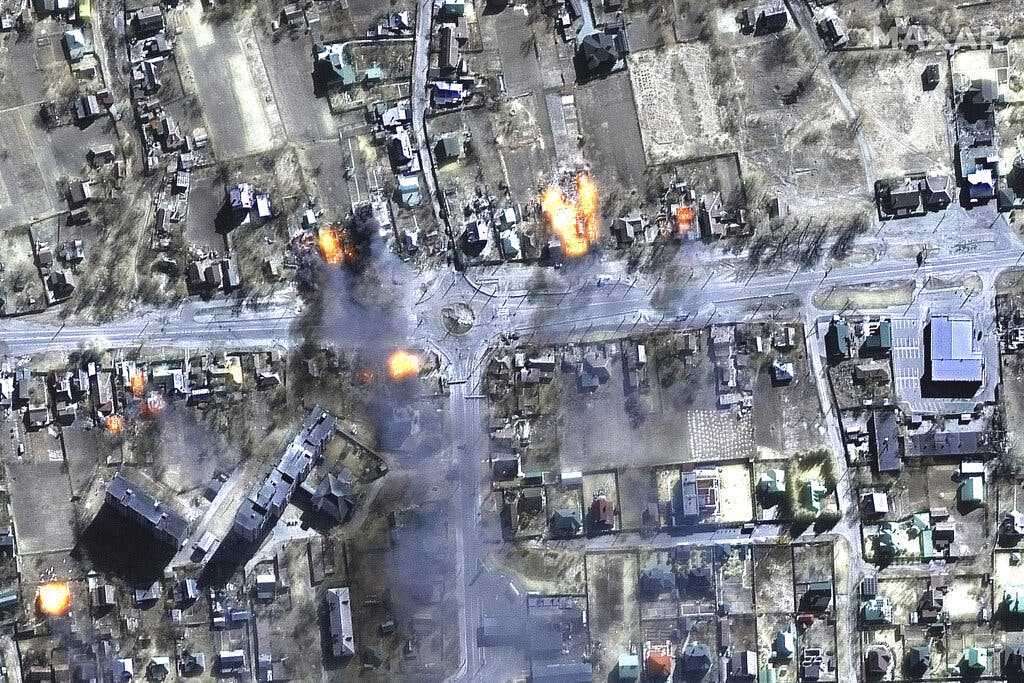Spotlight on Ukraine’s Air Defenses as Russia Presses Offensive
A newspaper claims that while it is obviously outnumbered and outgunned, Ukraine’s air defense has been quite effective ‘in defending Kyiv from most cruise and ballistic missiles.’

As Vladimir Putin’s all-out war on Ukraine lurches past the three-week mark, the embattled country’s eloquent president, Volodymyr Zelensky, will likely step up his appeals to close the skies over Ukraine and request military aircraft, even as Ukraine’s air defenses are reportedly performing better than expected in the multifront fight against the Russian offensive.
The Kyiv Independent, one of the more objective Ukrainian newspapers, reports that Ukraine’s “old air defense proves unexpectedly effective in combat.” The newspaper claims that while it is obviously outnumbered and outgunned, Ukraine’s air defense has been quite effective “in defending Kyiv from most cruise and ballistic missiles” and that in contrast to Kharkiv, Mariupol, or Chernihiv, which are vulnerable to airstrikes, “Kyiv is still the best-protected, as most missiles targeting the city are successfully intercepted.”
Not all, though. This morning parts of a Russian missile struck another apartment block in the capital, this time in the southeastern Darnytskiy district. According to Kiev’s emergency services, shrapnel hit the 16th floor and destroyed it; one person was reported killed and three injured in the ensuing fire. An evacuation of people from the 11th floor and higher and a search for survivors was under way.
Incidents such as this new attack make the question of Ukraine’s readiness to defend against them in the days ahead bristle with implications. Consider a story in Haaretz by that newspaper’s unassailable Anshel Pfeffer, in which he notes that a Ukrainian commander positioned between Odessa and Mykolaiv in southern Ukraine told reporters that Ukainians are fighting and winning but they need “a missile defense shield to protect our people from Russian bombardment.”
Israel, of course, has the best-known and arguably most effective missile defense shield systems in the world, including but not limited to the Iron Dome designed to shoot down rockets fired from relatively short range.
Adding to the intrigue are the mounting Russian losses on the ground in Ukraine. The New York Times, citing unidentified American officials, reports that an estimated 7,000 Russian troops have already been killed in three weeks of fighting. And with two-thirds of the Russian army’s combat units now deployed to Ukraine, Russia’s ability to successfully prosecute the war that it started could collapse within 10 days, as the Sun’s Theodore Lapkin has explained.
As Russian airstrikes continue, many with lethal consequences, and amid the backchannel jockeying for a truce on one hand and more airborne defenses on the other, how will all this play out?
Then there are drones. The AP reported that despite three weeks of Russian bombardment, Ukraine has kept up a stiff defense of its cities by using Turkish-made drones to carry out pop-up attacks on the invaders with a lethal effectiveness that has surprised Western military experts. The Bayraktar TB2 unmanned aerial vehicles, which carry lightweight, laser-guided bombs, normally excel in low-tech conflicts, and Turkey has sold them to more than a dozen countries, including Ukaine.
Washington will arm the Ukrainian military with even deadlier drones than those. The New York Times reports today that the U.S. is adding Kamikaze drones to the weapons flow to Ukraine. Earlier NBC News reported that as part of a military aid package announced Wednesday, the Biden administration will be providing Ukraine with killer drones called Switchblades, essentially “robotic smart bombs, equipped with cameras, guidance systems and explosives.” The 300 model is designed for pinpoint strikes on personnel, and the larger 600 is meant to destroy tanks and other armored vehicles.
In a message on its website, the manufacturer of the drones, Arlington, Virginia-based AeroVironment, said the company “stands with the people of Ukraine and all of NATO.” The message also said, “Ukraine and our eastern European allies need these solutions now to win against the Russian military and strategically deter future aggression.”
Amid fierce ground fighting in several areas of Ukraine, Russia’s aerial bombardment continues, with the ugly reality of the results of what frequently appear to be indiscriminate Russian strikes sometimes being obscured by the broader sweep of the war.
Earlier this week, the Jersualem Post reported that “the yeshiva building of the Ukrainian Kharkiv Jewish Community suffered a direct hit by a rocket on Tuesday morning,” a local Chabad community said on Facebook. The newspaper reported that the building was empty at the time of the strike, and that last week the windows of the main synagogue of Kharkiv were shattered.
In the early hours of March 17, more Russian shelling hit the Kharkiv region; in Merefa, it destroyed a school and a community center, damaged neighboring homes, and injured military personnel, according to the Ukrainian Pravda, or Ukrainian Truth. That newspaper — not to be confused with the Russian Pravda — also reported that 53 people were killed by Russian shelling of Chernihiv yesterday. The newspaper cited the Chernihiv Regional Military Administration as the source of that claim.
In another sign of the global upheaval caused by the war in Ukraine, a Russian Orthodox church in the Netherlands has broken ranks with the powerful Russian Orthodox Church over the latter’s openly pro-Putin stance.
An article in the Moscow Times headlined, “Orthodox Christian Unity Broken by ‘Russian World’ Heresy,” relates how the Russian Orthodox parish of Saint Nicholas of Myra in Amsterdam has requested “a canonical dismissal” from the Moscow Patriarchate and asked to be received into a diocese under the Ecumenical Patriarchate of Constantinople. The Ecumenical Patriarchate is viewed by some in the Kremlin in an adversarial light.
The head of the church, Bartholomew I, has spoken out against the war and, as the Moscow Times reports, this marks the first time that a Western Orthodox Church has broken with the Moscow Patriarchate over the war in Ukraine.

